The softest, fluffiest Japanese-style milk bread with a tender crumb that stays moist for days!
Jump to:
What is milk bread?
Shokupan (食パン), Hokkaido milk bread or Japanese milk bread, is a light and fluffy loaf of white bread with a slightly sweet milky flavor and cloud-like texture. While it is most commonly known as Japanese milk bread there are also equivalents in Korea and China, with an equally delicious light texture.
The word shokupan directly translates to "eating bread", as it is a simple bread loaf that can be enjoyed daily. You can find it at almost any Asian bakery, and they are baked in open pans for this look that we are creating today, or a Pullmans loaf for a perfect rectangle that is perfect for sandwiches.
The secret to getting that perfectly soft texture that Japanese milk bread is known for is making a water roux (aka tangzhong in Chinese or yudane in Japanese).
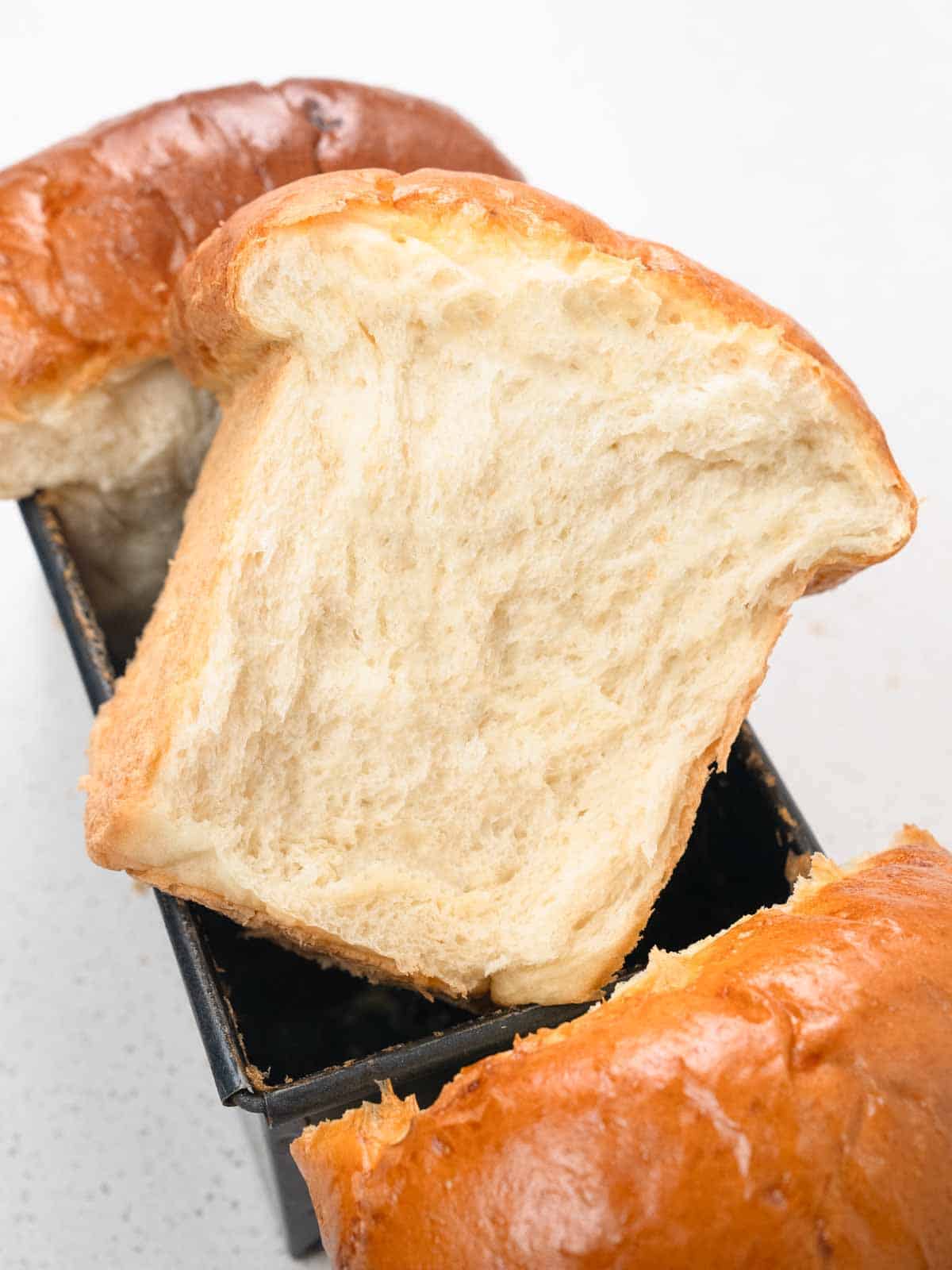
What is tangzhong?
Asian bakery bread has that super soft and fluffy texture that is so different from European bread which tends to be much harder with a crust.
The hardest part of making Asian-style bread is recreating that texture. It's very easy to end up with gummy or dense bread, rather than that cloud-like texture. This is where the technique of tangzhong or yudane comes in.
This is a Chinese technique that cooks flour with water until it forms a thick paste. The roux is then cooled and added back into the rest of the dough. This process forces the flour to absorb more water and ultimately become a soft and lighter dough.
How to make tangzhong
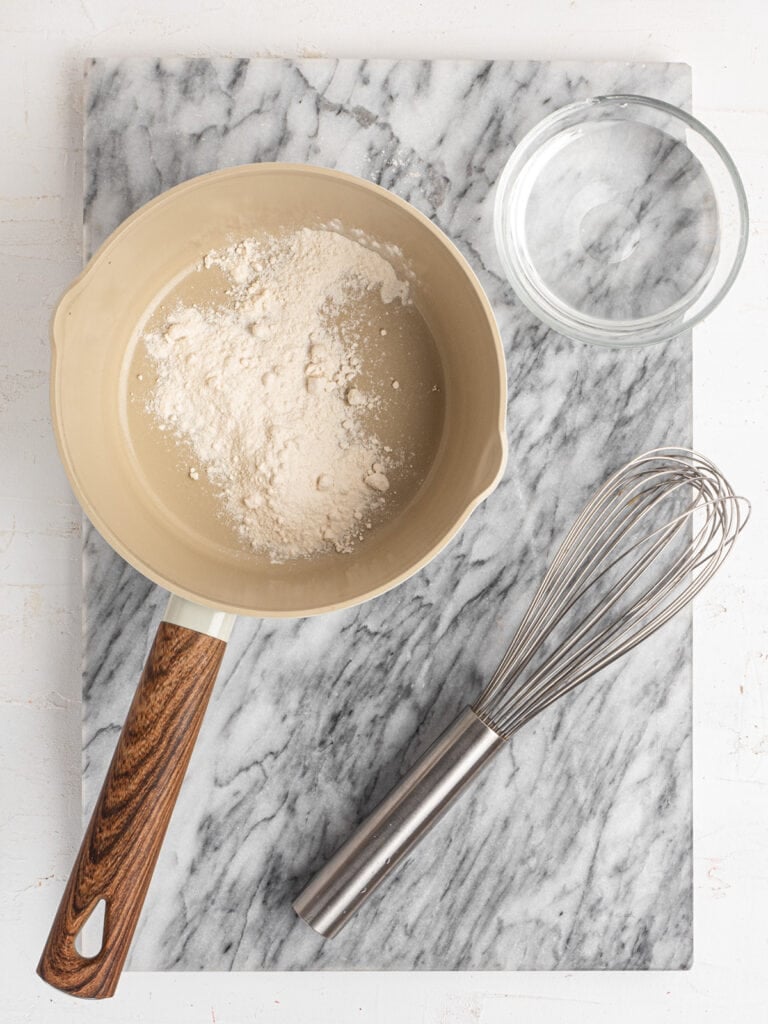
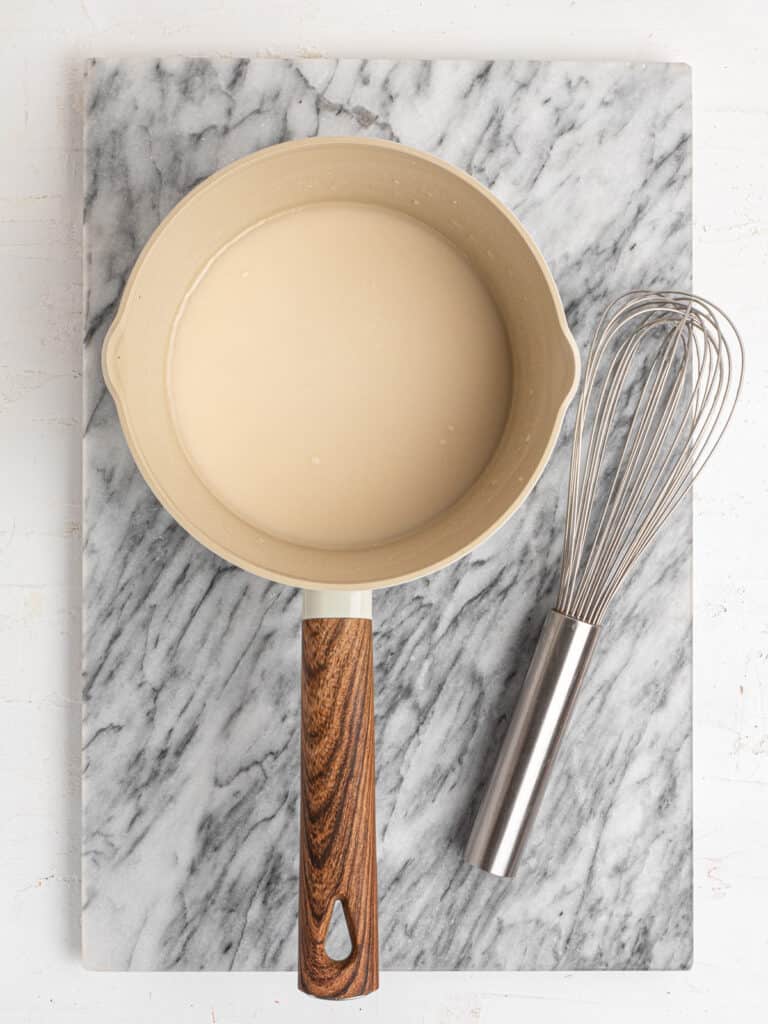
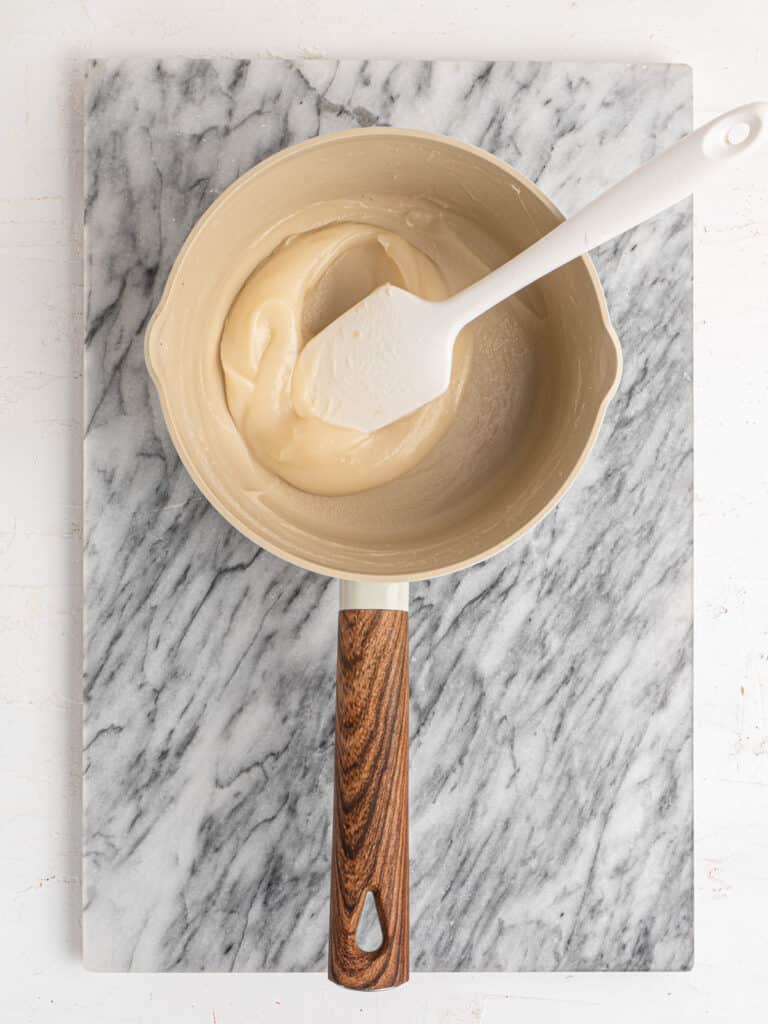
- Heat the flour and water over medium heat: Heat the water and flour slowly. Overheating can cause it to clump up rather than thicken into a smooth paste.
- Whisk constantly: The more you whisk the flour and water the smoother the paste will form.
- Remove when a thick paste forms: Once the roux forms a thick translucent paste take it off the heat. It should be thick enough to hold itself together when scooped up with a spatula.
Making milk bread dough
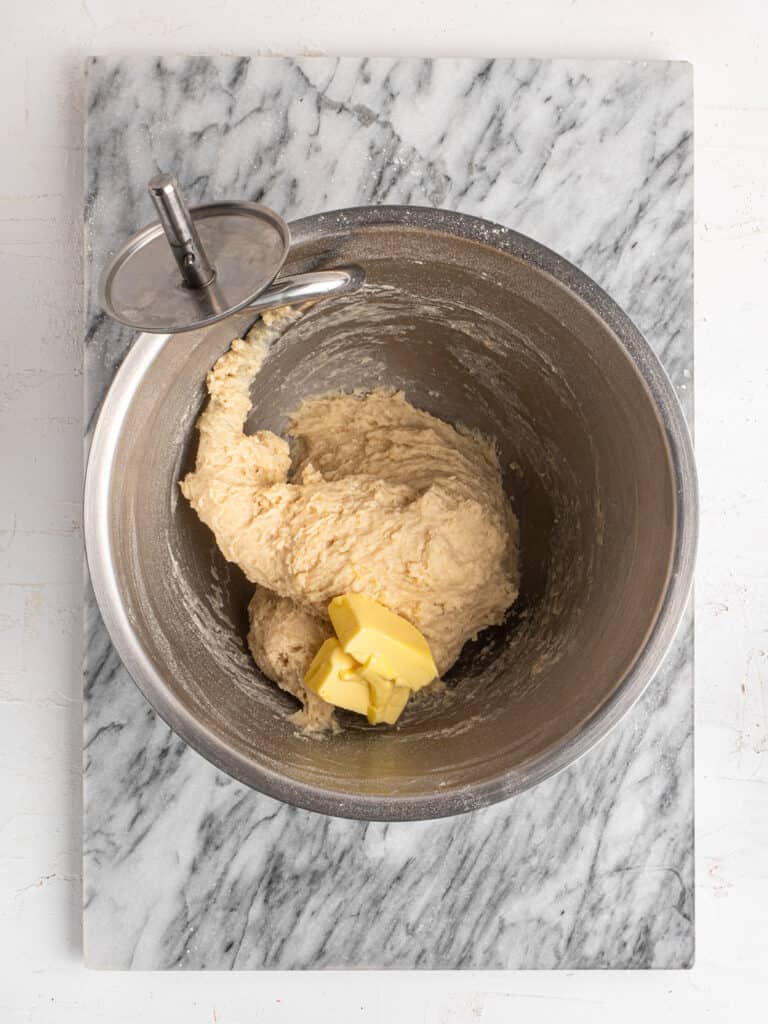
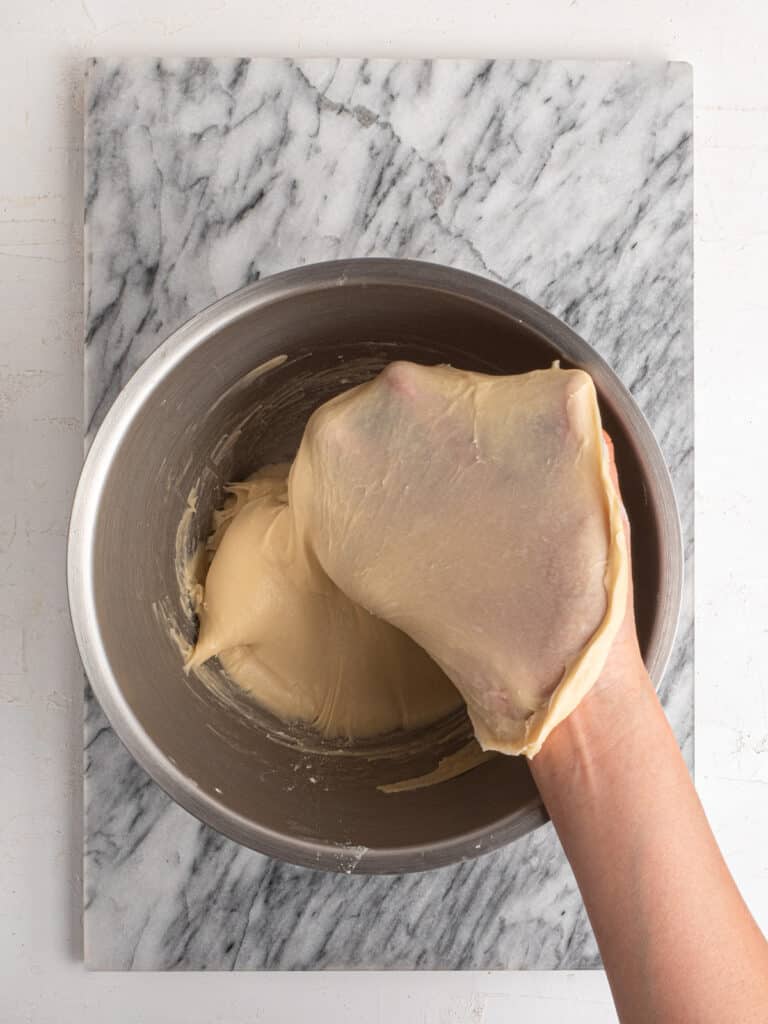
- Combine the bread flour, sugar, salt, and yeast in the bowl of a stand mixer fitted with a dough hook. Add the cooled roux and milk, and mix on medium speed for 3 minutes or until combined
- Add the butter and continue to mix for another 20 to 25 minutes, or until the dough begins to come away from the sides of the bowl, and it looks smooth and elastic. You should be able to pull a thin sheet of dough without it tearing
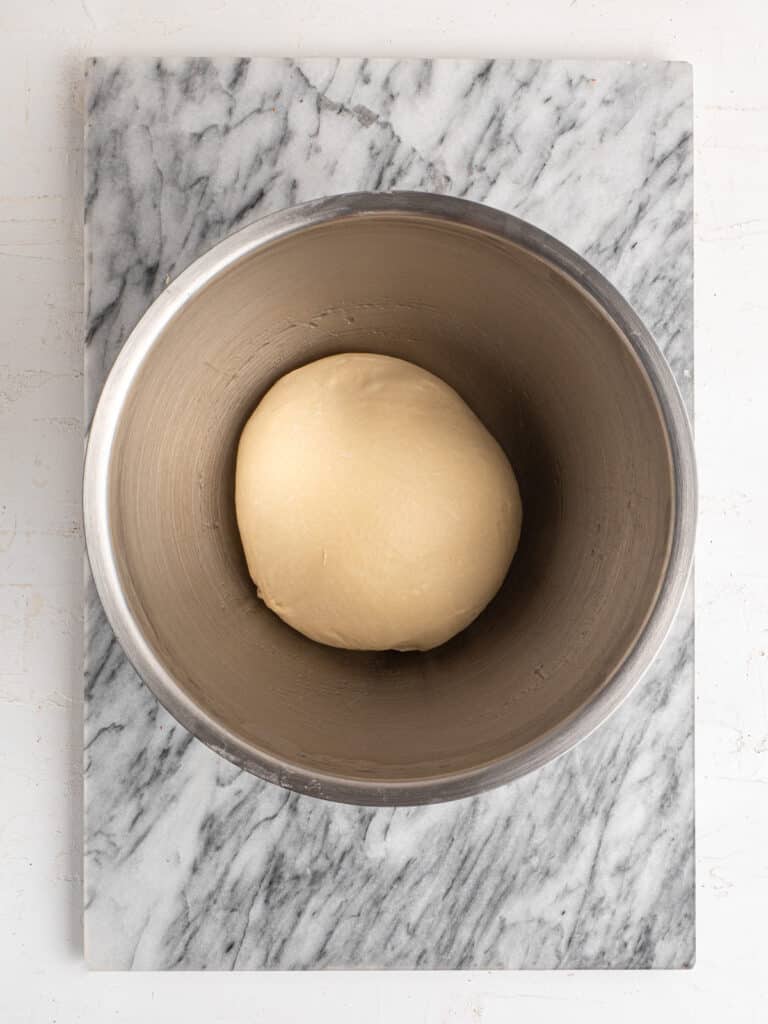
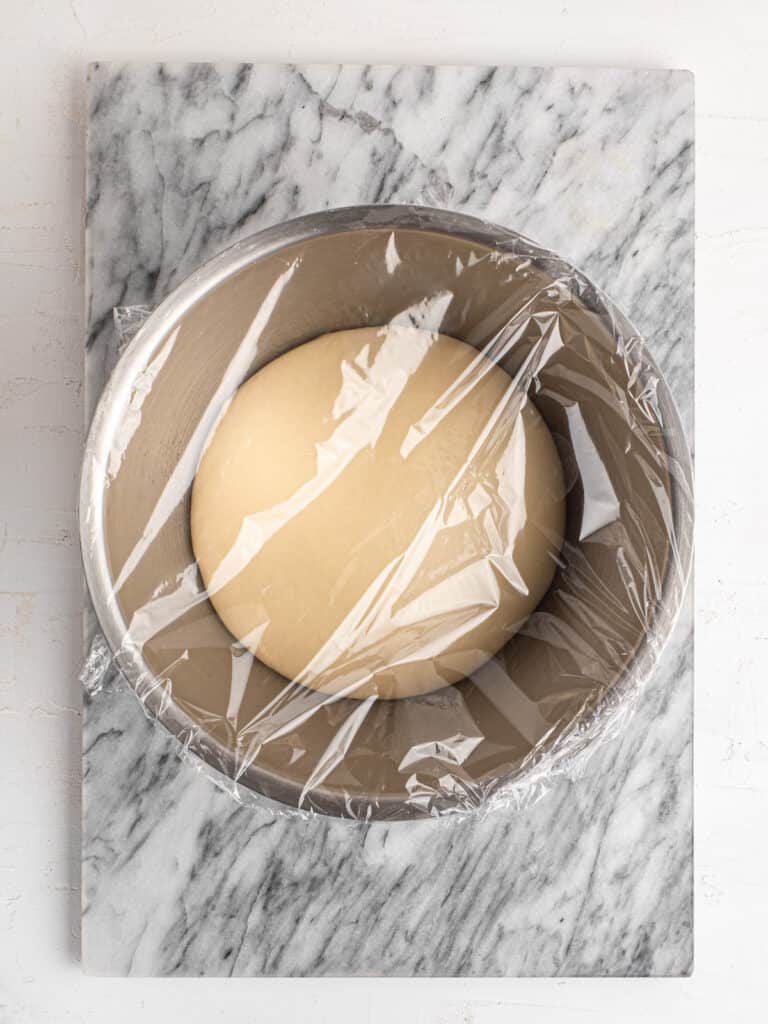
- Roll the dough into a ball and place it in a large bowl greased with oil
- Cover with cling wrap or a tea towel and let it proof in a warm place for 1-2 hours, or until doubled in size
- Once proofed transfer it to a floured surface and gently press out the air
Shaping milk bread


- Divide the dough into thirds and roll into balls
- Using a rolling pin roll one ball into a long oval, starting from the short end roll the dough up into a short cylinder
- Set it aside on your counter and repeat with the remaining dough
- Cover the dough logs with your cling wrap or tea towel and let them rest for 15 minutes


- Meanwhile, grease a 22 x 13cm / 9 x 5 inch loaf tin
- Once the logs have rested roll them into a thin 10cm / 4 inch wide strip
- Then from the short end roll the dough up to form a short cylinder


- Place the cylinder in the greased tin and repeat with the remaining dough
- Loosely cover the tin with cling wrap and allow it to rest for 30-60 minutes in a warm place until doubled in size
- Meanwhile, combine the egg and milk in a small bowl and whisk until combined
- Preheat the oven to 180C/350F and brush the proofed bread with the egg glaze


- Bake the bread for 20 minutes, or until golden brown
- Remove from the oven and cool on a wire rack for 1 hour before slicing


Ingredients
Roux
- Bread flour: The flour here acts like a sponge, absorbing more water so that when it is added to the final dough it increases the overall dough moisture content
- Water: Water adds moisture of course!
Dough
- Bread dough: Bread flour has a higher protein content, which helps your bread dough develop more gluten strands while kneading. Resulting in a bread dough that can rise higher and fluffier
- Granulated sugar: Sugar gives the bread a slight sweetness as well as giving the yeast energy to continue to produce gas and help the dough rise
- Salt: Salt helps to balance out the flavor of the dough. As well as giving strength to the gluten in the dough, giving it a stronger foundation to rise
- Instant dry yeast: I like to use instant yeast as it doesn't need to be activated before being added to the dough. If you are using active dry yeast make sure you activate it in the warm milk until it starts bubbling before adding it to the dough mixture
- Unsalted butter: Butter helps to give the bread more flavor as well as a softer texture
Glaze
- Egg: Egg gives the bread that golden color and shiny sheen once baked
- Milk: Milk helps to thin out the egg mixture a little, as the egg can be quite thick and hard to brush onto the bread dough by itself
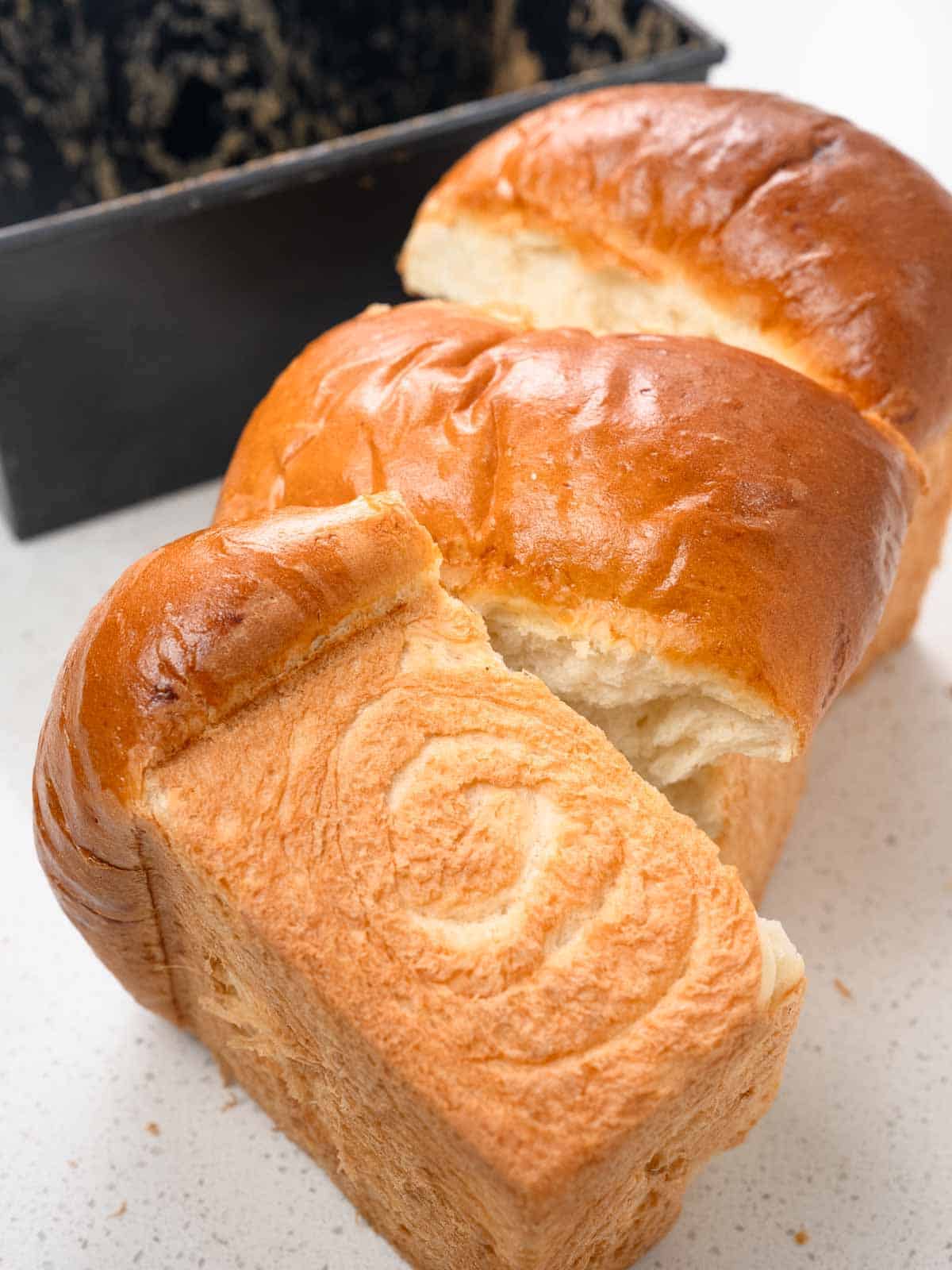
Frequently Asked Questions
How long does this last?
Typically homemade bread is best the day it's made and won't last much longer than 2 days.
If you make this bread dough with the tangzhong method it will last from 3-4 days. This is because the tangzhong adds extra moisture to the bread, preventing it from getting stale quickly.
How should I store milk bread?
The best way to store milk bread if you are eating it within a couple of days is in an airtight container in the fridge.
When you're ready to eat it cut a slice and toast it in a toaster, or heat it gently in the microwave with a splash of water for a soft texture. The splash of water will prevent it from drying out.
Can I freeze milk bread?
Yes you can! If you are freezing the bread make sure you cut it into slices beforehand, as it is very difficult to slice once it's frozen. I like to slice mine into thick slices and place a sheet of bakign paper inbetween each slice to prevent the bread from sticking together.
How come my bread dough didn't rise?
There are a couple of reasons why you dough didn't rise:
- The yeast was old/dead: Yeast gives the dough rise, and without it, the dough will have no air to it
- The milk added was too hot: If the milk is too hot it can kill the yeast when added, make sure it is lukewarm in temperature
- The dough wasn't proofed for long enough: If the dough isn't proofed for long enough it won't have had the time to develop enough gas to rise
- The dough was too cold: If the environment is not warm enough the yeast can't work at its optimal potential, preventing the dough from rising as much
Can I make this by hand?
It'll take a lot more effort and it will take a lot longer than using a machine but it is definitely possible.
When kneading the dough make sure you knead it until it reaches the "windowpane" stage. This means you can create a thin sheet of dough that is translucent like a windowpane without it tearing. As long as you reach this stage you know you are good to let it proof. It'll take about 20-30 minutes by hand.
Why is the crumb of my bread coarse?
There are a couple of reasons:
- The dough was over-proofed during bulk fermentation (the first proof)
- The temperature where you proofed your dough was too high
- The dough was over-kneaded, over-kneading causes the dough to lose its structure
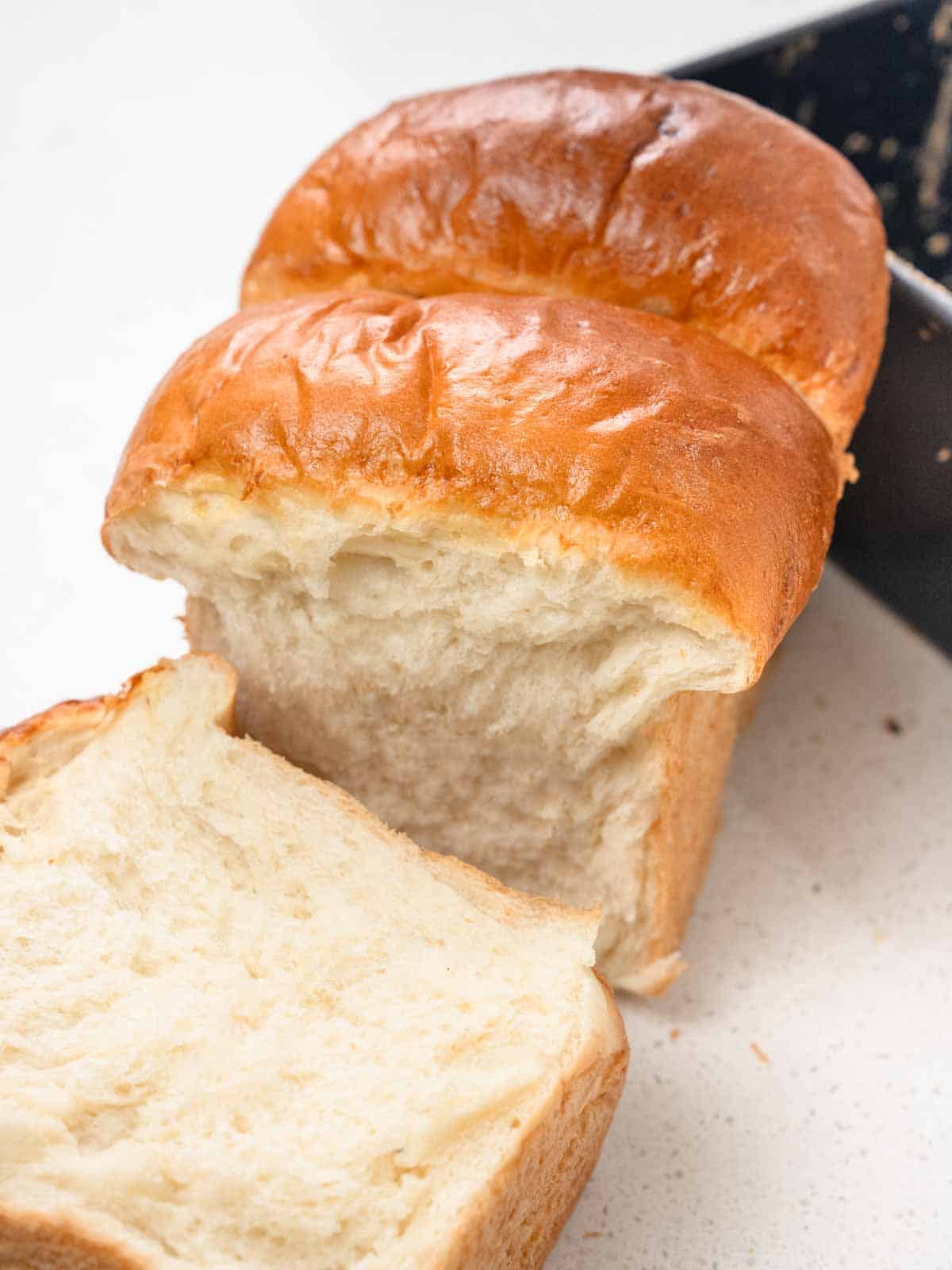
Let's Get Baking
I first released this milk bread recipe in my cookbook "Mochi, Cakes and Bakes" but I wanted to share it with all of you so here it is!
If you liked this recipe make sure to leave me a comment and rating down below, I would love to know how you went.
Also, don't forget to tag me on Instagram @catherine.desserts and hashtag #cattycakes so I can see and share your desserts. Follow me on Facebook, Pinterest, Youtube, and TikTok for more of my baking creations and updates! Until next time... happy caking!
Print📖 Recipe
Japanese Milk Bread
The softest, fluffiest japanese-style milk bread with a tender crumb that stays moist for days!
- Prep Time: 45 minutes
- Cook Time: 20 minutes
- Total Time: 1 hour 5 minutes
- Yield: 1 Loaf 1x
- Category: Bread
- Method: Intermediate
- Cuisine: Asian
Ingredients
Water Roux
- 24g Bread flour (3 tbsp)
- 120ml Water (½ cup)
Dough
- 380g Bread flour (2 ¾ cup)
- 37g Granulated sugar (3 tbsp)
- 1 tsp Salt
- 7g Instant dry yeast (2 ¼ tsp)
- 160ml Whole milk, lukewarm (⅔ cup)
- 30g Unsalted butter (2 tbsp)
Glaze
- 1 large egg
- 15ml Whole milk (1 tbsp)
Instructions
Water roux
- Combine the water and flour in a small saucepan over low heat and stir until well combined
- Continue to stir the mixture until it has thickened up into a thick semi-translucent paste, it should take a couple of minutes
- Remove from the pan, place in a bowl, and cover with cling wrap
- Allow this to cool for 1 hour or until room temperature
Dough
- Combine the bread flour, sugar, salt, and yeast in the bowl of a stand mixer fitted with a dough hook. Add the cooled roux and milk, and mix on medium speed for 3 minutes or until combined
- Add the butter and continue to mix for another 20 to 25 minutes, or until the dough begins to come away from the sides of the bowl, and it looks smooth, elastic and shiny
- Roll the dough into a ball and place it in a large bowl greased with oil
- Cover with cling wrap or a tea towel and let it proof in a warm place for 1-2 hours, or until doubled in size
- Once proofed transfer it to a lightly floured surface and gently press out the air bubbles
- Divide the dough into thirds and roll into balls
- Using a rolling pin roll one ball into a long oval, starting from the short end roll the dough up into a short cylinder
- Set it aside on your counter and repeat with the remaining dough
- Cover the dough logs with your plastic wrap or tea towel and let them rest for 15 minutes
- Meanwhile, grease a 22 x 13cm / 9 x 5 inch loaf pan
- Once the logs have rested roll them seam side down into a thin 10cm / 4 inch wide strip
- Then from the short end roll the dough up to form a short cylinder
- Place the cylinder in the greased tin and repeat with the remaining dough
- Loosely cover the tin with plastic wrap and allow it to rest for 30-60 minutes in a warm place until doubled in size
- Meanwhile, combine the egg and milk in a small bowl and whisk until combined
- Preheat the oven to 180C/350F and brush the proofed bread with the egg glaze
- Bake the bread for 20 minutes, or until golden brown
- Remove from the oven and cool on a wire rack for 1 hour before slicing

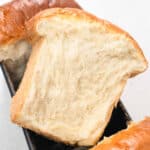
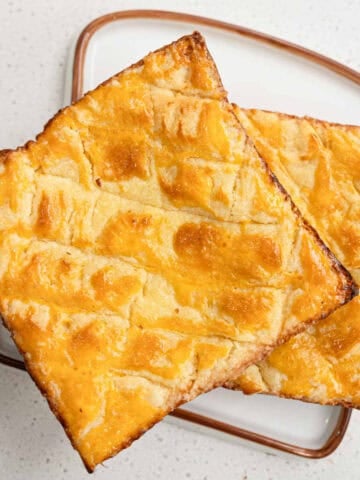



Comments
No Comments